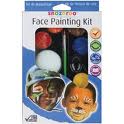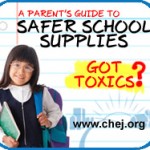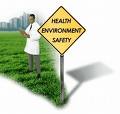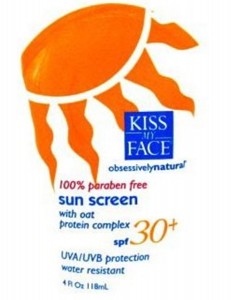Happy Earth Day!
Sometimes it takes a little trash-talk to spark a revelation. This morning I dutifully snapped a new garbage bag, put in the garbage can, and then bent over to pick up the sippy cup that had rolled across the floor. Moments later, I noticed a really strong scent and a white powder floating in the air above the garbage can. I realized the garbage bag is scented and my two year old and I were inhaling the powdery substance. The crazy-neurotic-mommy in me wondered if the powder is hazardous to my son’s health. Then I looked at the sippy cup with the chewed straw, and I wondered what unknown chemicals were lurking in the plastic. All this worry on Earth Day, nonetheless – how’s that for irony. Then came the revelation. I should not have to worry about the chemical make-up of garbage bags and plastic cups - especially before I’ve had a chance to finish my morning coffee. I should not have to worry if my everyday products contain toxic chemicals that have been linked to infertility, early puberty, low sperm counts, miscarriage and cancer. My family and I deserve better. We deserve legislators who protect our health and the health of other families. We deserve the passage of the Safe Chemicals Act of 2010.
Today is Earth Day and what better way to celebrate by writing a letter to the editor urging Congress to pass Safe Chemicals Act of 2010? Last week, members of Congress introduced the Safe Chemicals Act of 2010, a necessary first step towards protecting our families and our communities from harmful and untested chemicals found in our homes and workplaces.
Here’s a quick summary of the Safe Chemicals Act:
- Provides EPA with sufficient information to judge a chemical’s safety.
- Requires manufacturers to develop and submit a minimum data set for each chemical they produce, while also preventing duplicative or unnecessary testing. EPA will have full authority to request additional information needed to determine the safety of a chemical.
- Prioritizes chemicals based on risk. Calls on the EPA to categorize chemicals based on risk, and focus resources on evaluating those most likely to cause harm.
- Ensures safety threshold is met for all chemicals on the market and places the burden of proof on chemical manufacturers to prove the safety of their chemicals. All uses must be identified and determined safe for the chemical to enter the market or continue to be used.
- Takes fast action to address highest risk chemicals and requires EPA to take fast action to reduce risk from chemicals that have already been proven dangerous. In addition, the EPA Administrator is given authority to act quickly if any chemical poses an imminent hazard.
- Creates open access to reliable chemical information and establishes a public database to catalog the information submitted by chemical manufacturers and the EPA’s safety determinations. The EPA will impose requirements to ensure the information collected is reliable.
- Promotes innovation and development of green chemistry and establishes grant programs and research centers to foster the development of safe chemical alternatives, and brings some new chemicals onto the market using an expedited review process.
So on this Earth Day, let’s ask – no, let’s demand -- that our legislators protect our health and the health of our families by writing a letter to the editor!





